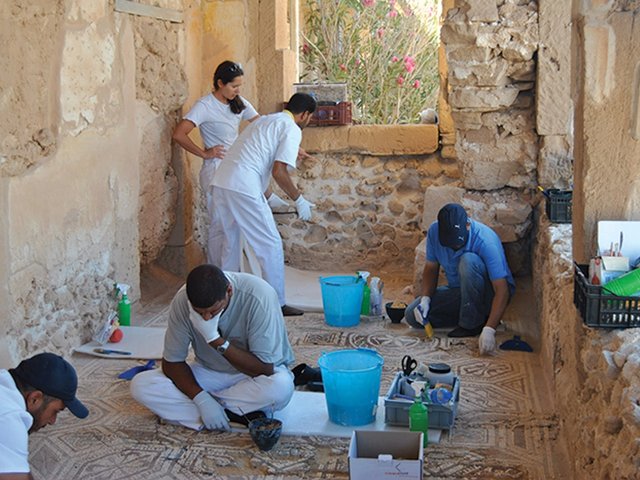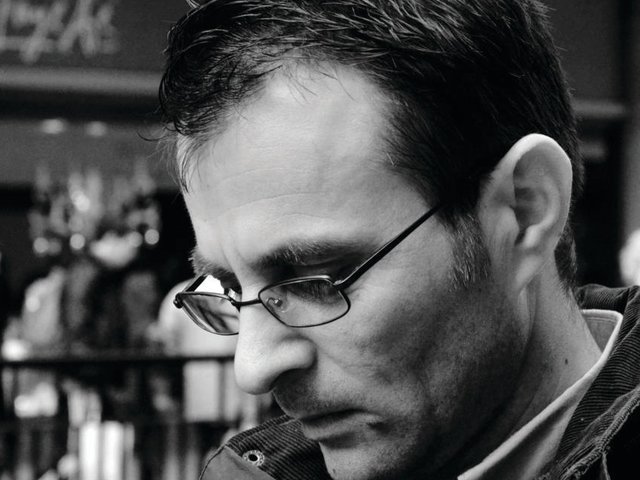Illicit antiquities are “gushing out” of Libya as political chaos engulfs the country. One of the hardest-hit areas is the country’s eastern coastal region, which is rich in archaeological treasures from sites such as the ancient Greek and Roman city of Cyrene. International and Libyan specialists say that “random digging” here is proceeding unchecked.
On a visit to the UK in September, the senior Libyan archaeologist Ramadan Shebani, the former archaeology curator at the Red Castle museum in Tripoli, told The Art Newspaper that he and other archaeologists are powerless to stop the looting in the political vacuum created by the overthrow of Muammar Gaddafi in 2011. Their concern is focused primarily on illegal digging around Cyrene, near Shahhat, one of the first areas to come under rebel control. The situation is exacerbated by new building in the region as people desperately seek housing in the war-torn country.
“The trouble is that people just go and do random digging, hoping to find things. It is impossible to monitor that, because people can just dig under their houses or in the desert,” Shebani said. Archaeologists have been trying to work with local authorities to control the situation, he added.
Looting to order? At least eight Libyan artefacts have been identified and seized in Europe when offered for sale. In January, the authorities were alerted to three marble statues in Bern, Switzerland, which were thought to have been found in Cyrene. Before that, four other pieces were recovered in Paris and one in London. Other looted works are being sold online. Shebani said: “You can see advertising for selling and buying Libyan statues and antiquities.”
In Paris, the French historian and researcher Morgan Belzic, of the École Pratique des Hautes Études, has been monitoring auction and dealer catalogues as well as the internet. He says that he has tracked 19 suspected Libyan pieces put up for sale this year alone. “All are from illegal excavations,” he says, predicting that the outflow of objects, particularly through Egypt, could worsen if the war ends as people seek to sell looted objects they may have hidden.
Belzic’s main focus is on funerary sculptures from Cyrenaica, the region surrounding the city of Cyrene. The artefacts from this area are often decorated with the image of the silphium, a seasoning plant that was vital to Cyrene’s economy in antiquity. The work reaching Europe ranges from small pieces offered for just a few hundred euros to major statues priced at hundreds of thousands, Belzic says. One “incredibly beautiful” piece was featured in a YouTube video that has since been deleted; the statue has now disappeared, Belzic says.
The International Council of Museums (Icom), which works with researchers such as Belzic, says that other possible seizures are pending. A spokeswoman for Icom says the organisation suspects that some “looting to order” is taking place, “especially of funerary busts from Cyrene”.
Gaddafi was toppled by Nato-backed forces in 2011. Three years later, disputed parliamentary elections produced rival governments in Tripoli and Tobruk. Adding to the chaos are the hundreds of rival militia groups that have emerged in the country and the ongoing Western-backed campaigns against Islamic extremists who have gained a foothold in Libya. Efforts by the international community to replace the rival administrations with a new Government of National Accord in the capital are already faltering and suffered a major setback in September, when the powerful general Khalifa Haftar seized several oil ports in the east of the country.
Fall of Gaddafi The US art historian and archaeologist Susan Kane, of Oberlin College, Ohio, who won the Society of American Archeology Presidential Award in 2013 for her work in Libya, says that the political fighting is now mirrored by divisions among the country’s archaeologists. “There are currently three governments in Libya, none of which is functioning very well, and there is no collaboration between them. There are two chairmen of antiquities, one in Tripoli and one in Benghazi, and neither one is talking to the other,” she says. “There is rampant urban encroachment and looting going on around Shahhat that nobody can stop because of local tribal politics. The stuff is gushing out of Cyrenaica.” Libya’s heritage is being overlooked amid the focus on Syria and sites such as Palmyra, she adds.
In July, Unesco listed all five Libyan World Heritage sites as endangered: Cyrene, Leptis Magna, Sabratha, the rock art sites of Tadrart Acacus and the old town of Ghadames. For their part, Libyan archaeologists accuse Unesco of not doing enough to assist their efforts on the ground.
There is one apparent bright spot amid the chaos. In 2011, when Gaddafi’s fall was imminent, Shebani and his colleagues at the Red Castle Museum, Libya’s national museum covering 5,000 years of history, managed to safeguard the museum’s treasures. They pretended that power cuts had closed the building and then hid around 2,500 artefacts, coins and other treasures by moving them into unused storage rooms where they were concealed, sometimes behind false walls with furniture placed to obscure the entrances. The hidden pieces include around 250 statues, such as one of Venus from the Hadrianic baths at Leptis Magna and a statue of the Three Graces from Cyrene. In some cases, archaeologists hid the statues’ heads, when these could be detached from restored pieces. “Statues in museums are protected; they are under control,” Shebani said.
Eighteen museums in the country are closed and will remain so until Libya has one government, Ramadan Shebani said. A spokeswoman for Icom says she believes that the objects in Libya’s museums are secure, but that “there are no guarantees, as the country has not been considered safe enough to send people on the ground to assess the recent situation”.



